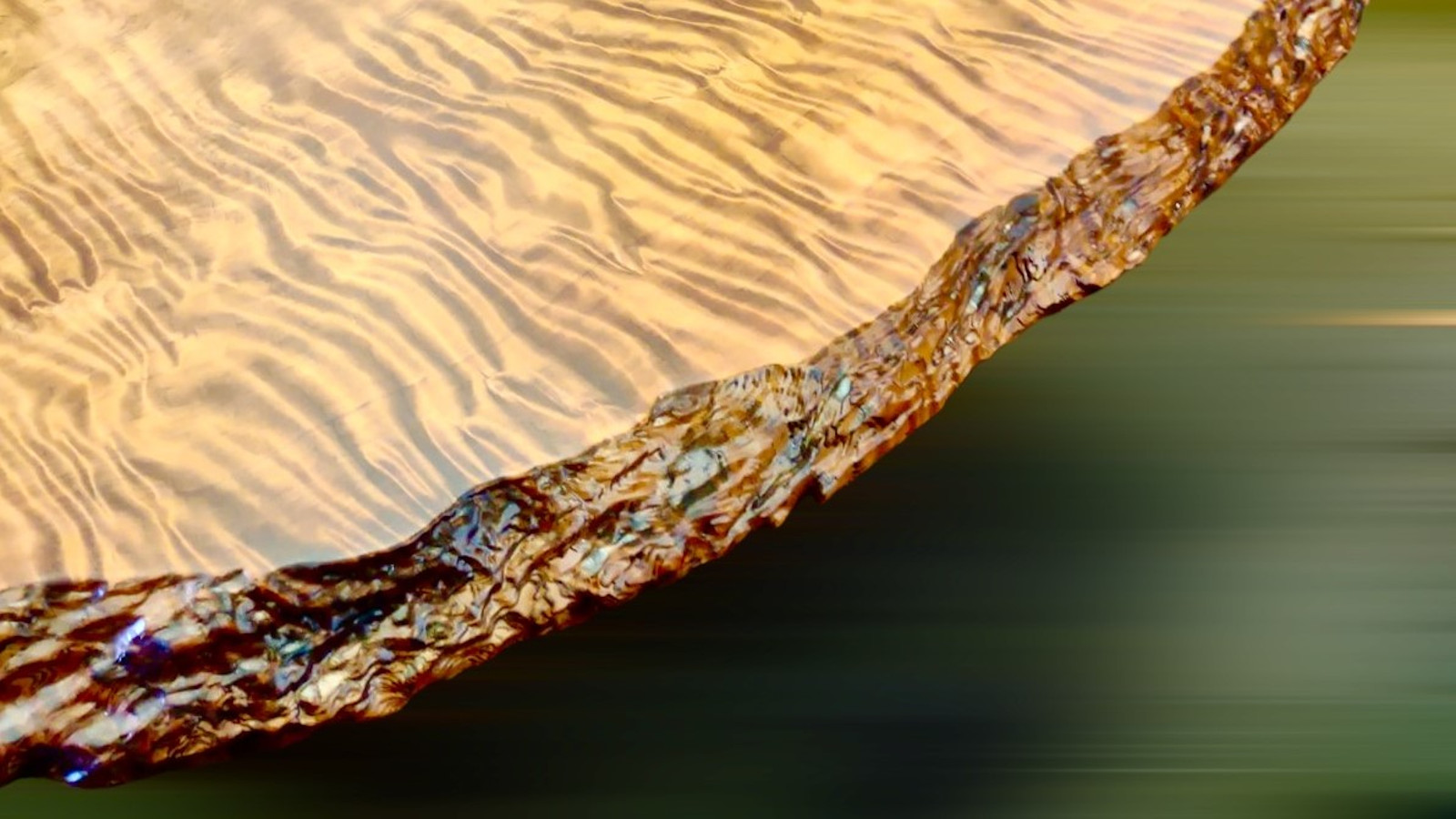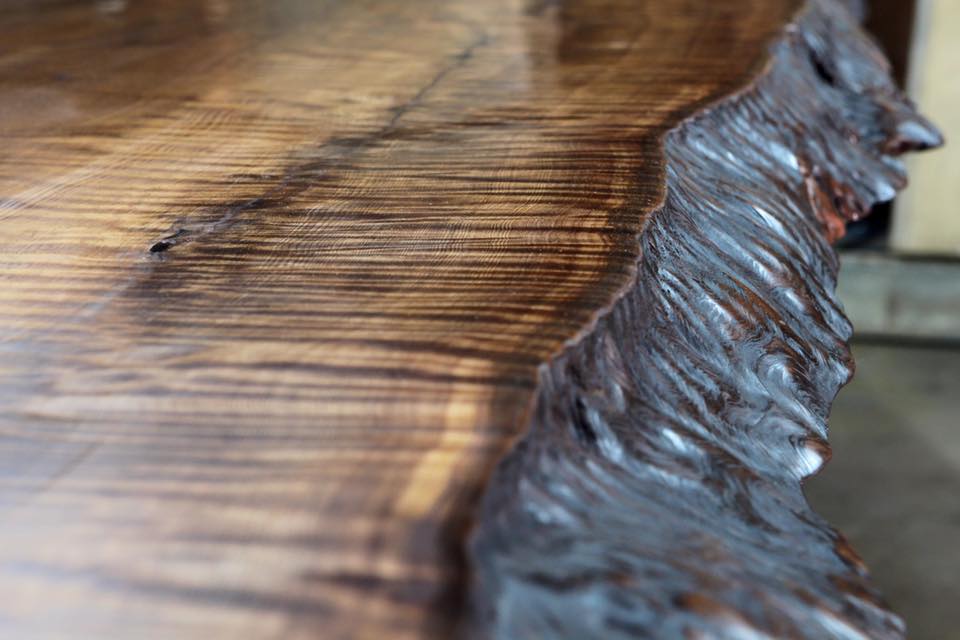
Live-edge wood slabs are a great option for table designs and furniture projects. The differences that set a live edge slab apart from other wood slabs lie in the aesthetics of the slab top, the visual appearance of the grain, and the edge of the slab. Our live edge wood slabs are cut and milled from ethically sourced salvaged logs and stumps. They have an abstract shape on the outer edge of the slab that may be wavy, slanted, or just all over the place. This visually attractive style of slab offers a blend of rustic and modern features.
Finishing Live-Edge Wood Slabs
The live edge (or natural edge) is prepared differently than a square cut slab. This is due to the organic shape and texture of the edge. Since there is a lot of variation on the edge, you must pay careful attention to how you finish it. The bark must be removed and sharp edges and burl spikes must be smoothed out. This is so there is nothing to catch or snag clothing. The finished edge should be smooth to the touch. It should also have texture to capture the rustic live edge aesthetic.
Ethical sourcing and sustainability favor this type of design. These slabs from salvaged stumps and logs with the least amount of waste possible. Live edge wood tables can be incorporated into just about any type of home decor. Regardless of your design preferences, a live edge slab can look gorgeous in any home or business.

Live Edge Wood Slab – Finished By Kelly Maxwell of LittleBranchFarm.com
Solid Wood Slabs
Solid wood slabs do not have a live edge and are generally square cut (90 degrees to the top). The edges are finished to the same level of smoothness as the top. Some of our customers prefer the aesthetic quality of square-cut slabs. Sometimes the live edge of a particular piece is not suitable to leave on a slab. This type of wood slab can be one solid piece, or it can be book-matched or even slip-matched to get a wider tabletop and a different look.
Book matching slabs can effectively give you double the width for your tabletop. The slabs need to be cut in consecutive order from the mill, or one needs to be sliced in half. We generally mill our slabs to three inches thick, so if you want to book match one slab, you will lose over half of the original thickness. This method of joining two slabs together can give you gorgeous results when done correctly. Depending on the grain of the slab you can achieve a butterfly effect with a seamless joint.
Slip Matching Slabs
Slip matching slabs is another method that can be used to give you a wider tabletop surface. It is similar to book matching slabs but instead of opening the two pieces like a book to joint them, you simply slide one off the side and place it next to the other one to join them. You can also use book matching with live edge slabs to achieve a wider tabletop and keep a live edge on both sides of the slab. This technique is my personal favorite because you can turn two narrower slabs with beautiful grain into a larger live edge wood slab table.
Environmentally Friendly Redwood Slabs
Please make sure to do your research on the sustainability of live edge wood slabs and the sourcing that different companies use to obtain their wood. Having beautiful furniture and protecting the environment can go hand in hand. Feel free to contact us with any questions you have regarding live edge wood slabs and building and finishing methods.
Tags:
burl wood,
burl wood grain,
Custom Burl Wood Furniture,
reclaimed redwood,
redwood burl,
sustainable materials


